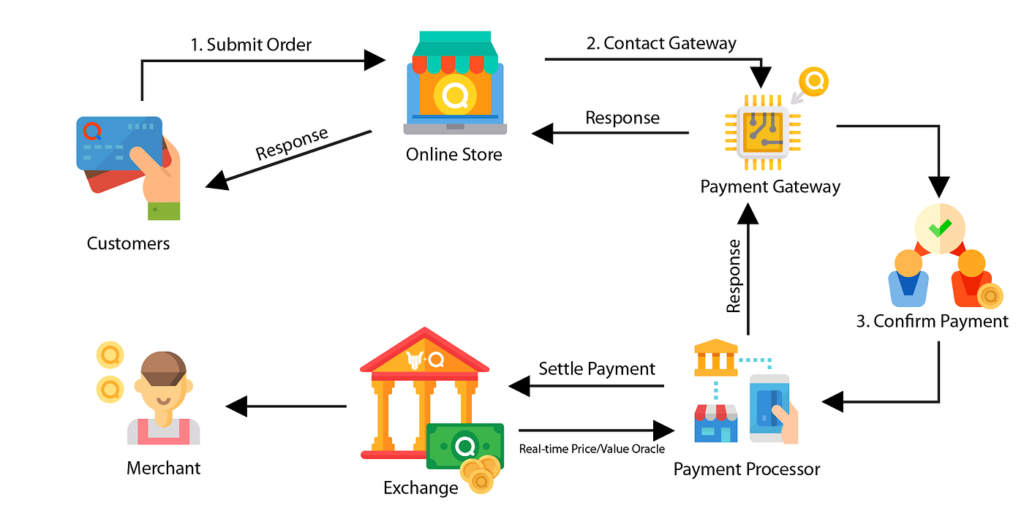AUTHOR : ADINA XAVIER
DATE : 16/10/2023
In the fast-paced world of e-commerce[1], ensuring smooth and secure payment transactions[2] is of paramount importance. Payment gateways[3] serve as the digital cashiers of the online marketplace, handling the flow of money between customers, merchants, and financial institutions.[4] With the growing significance of Python in the realm of web development and automation, integrating payment gateways[5] with Python has become a popular choice for businesses. In this article, we will explore how Python can be harnessed to create a seamless and efficient payment gateway, simplifying the online transaction process.
Setting up a Payment Gateway in Python
Choosing the Right Payment Gateway
Selecting an appropriate payment gateway is the first crucial step in the integration process. Consider factors like transaction fees, supported payment methods, international coverage, and security features when making this choice.

Installing Required Libraries and Packages
To start building a Python-based payment gateway, you need to install the necessary libraries and packages. Popular choices include Django, Flask, also various payment gateway-specific Python libraries.
Configuring API Keys
Most payment gateways require API keys for authentication. Configuring these keys is essential for secure communication between your Python application also the payment gateway[1].
Making Payments with Python
Creating a Payment Form
Design a user-friendly payment form that gathers essential payment information, such as card details, billing address, and transaction amount.
Handling Payment Processing
Utilize Python to process payments securely. Implement features like payment validation, card verification, and real-time transaction status updates.
Ensuring Security and Encryption
Security is paramount when handling payments. Python allows you to implement strong encryption also security measures to protect customer data.
Error Handling and Debugging
Common Payment Gateway Errors
Understand common errors that can occur during payment processing[2]. This knowledge is crucial for effective debugging.
Debugging Python Payment Gateway Integration
Learn how to troubleshoot and fix issues that may arise during the integration process, ensuring a smooth customer experience.
Integrating Payment Gateway with a Website
Steps to Integrate Payment Gateway into a Website
Discover the step-by-step process of incorporating your Python-based payment gateway into your website, making it user-friendly and efficient.
Testing the Payment Gateway
Before going live, rigorous testing is essential to identify and rectify any issues that may compromise the payment process.
User Experience and User Interface Considerations
Ensure that the integration enhances the overall user experience by offering a seamless and intuitive payment process.

Handling Payment Gateway Responses
Successful Payment Confirmation
Explore the process of confirming successful payments also ensuring that customers receive prompt acknowledgments.
Handling Failed Payments
Learn how to manage failed transactions[3] and guide customers through the necessary steps for a successful payment.
Handling Refunds and Chargebacks
Understand how to process refunds and manage chargebacks effectively, maintaining trust and goodwill with customers.
Adding Additional Features
Subscription Payments
Discover how to enable subscription-based payments for services or products, offering convenience to customers.
Handling International Payments
Expand your payment gateway’s reach by incorporating international payment options, opening up new markets.
Mobile App Integration
Adapt your Python payment gateway for mobile applications, catering to a broader audience.
Payment Gateway Security
Protecting Customer Data
Explore the best practices for safeguarding sensitive customer information, maintaining trust also compliance.
Compliance with Payment Industry Standards
Ensure that your payment gateway complies with industry standards and regulations, avoiding legal complications.
SSL Certificates and Encryption
Understand the significance of SSL certificates also encryption in securing payment transactions.
Cost and Pricing
Pricing Models of Payment Gateways
Dive into the pricing models of various payment gateways, understanding transaction fees[4] and hidden costs.
Comparison of Popular Payment Gateways for Python
Compare and contrast popular payment gateways suitable for Python integration to make an informed choice.
Case Studies
Explore real-world case studies of businesses that have successfully integrated Python-based payment solutions, realizing their potential.
Advantages of Using Python for Payment Gateways
Versatility and Flexibility
Learn how Python’s versatility and flexibility make it an ideal choice for payment gateway integration.
Large Python Developer Community
Benefit from the vast Python developer community, offering support also resources for your payment gateway project.
Fast Development and Deployment
Discover how Python accelerates the development also deployment of payment gateways, saving time and resources.

Conclusion
In conclusion, a well-integrated payment gateway is the backbone of any successful e-commerce venture. Python’s flexibility and extensive libraries make it an excellent choice for creating a seamless payment experience. By following best practices and staying updated with industry changes, businesses can harness the power of Python to simplify online transactions[5] and drive growth.
FAQs
1. What is a payment gateway, and why is it important in e-commerce? A payment gateway is a digital service that facilitates online transactions by securely transmitting payment data between customers, merchants, also financial institutions. It is crucial in e-commerce as it ensures smooth and secure payment processing, enhancing the customer experience.
2. How can I choose the right payment gateway for my business? Choosing the right payment gateway involves considering factors such as transaction fees, payment methods, international coverage, and security features. Conduct thorough research and select the gateway that aligns with your business needs.
3. What are the key security measures in payment gateway integration with Python? Security measures include SSL encryption, compliance with industry standards, and protection of customer data. Implementing these measures is essential to safeguard sensitive information.
4. What are the advantages of using Python for payment gateway integration? Python offers versatility, a large developer community, and rapid development also deployment, making it an ideal choice for payment gateway integration.
5. What are the challenges of using Python for payment gateways, and how can they be addressed? Challenges may include compatibility issues and performance concerns. These can be addressed through careful planning, optimization, also ongoing maintenance.





